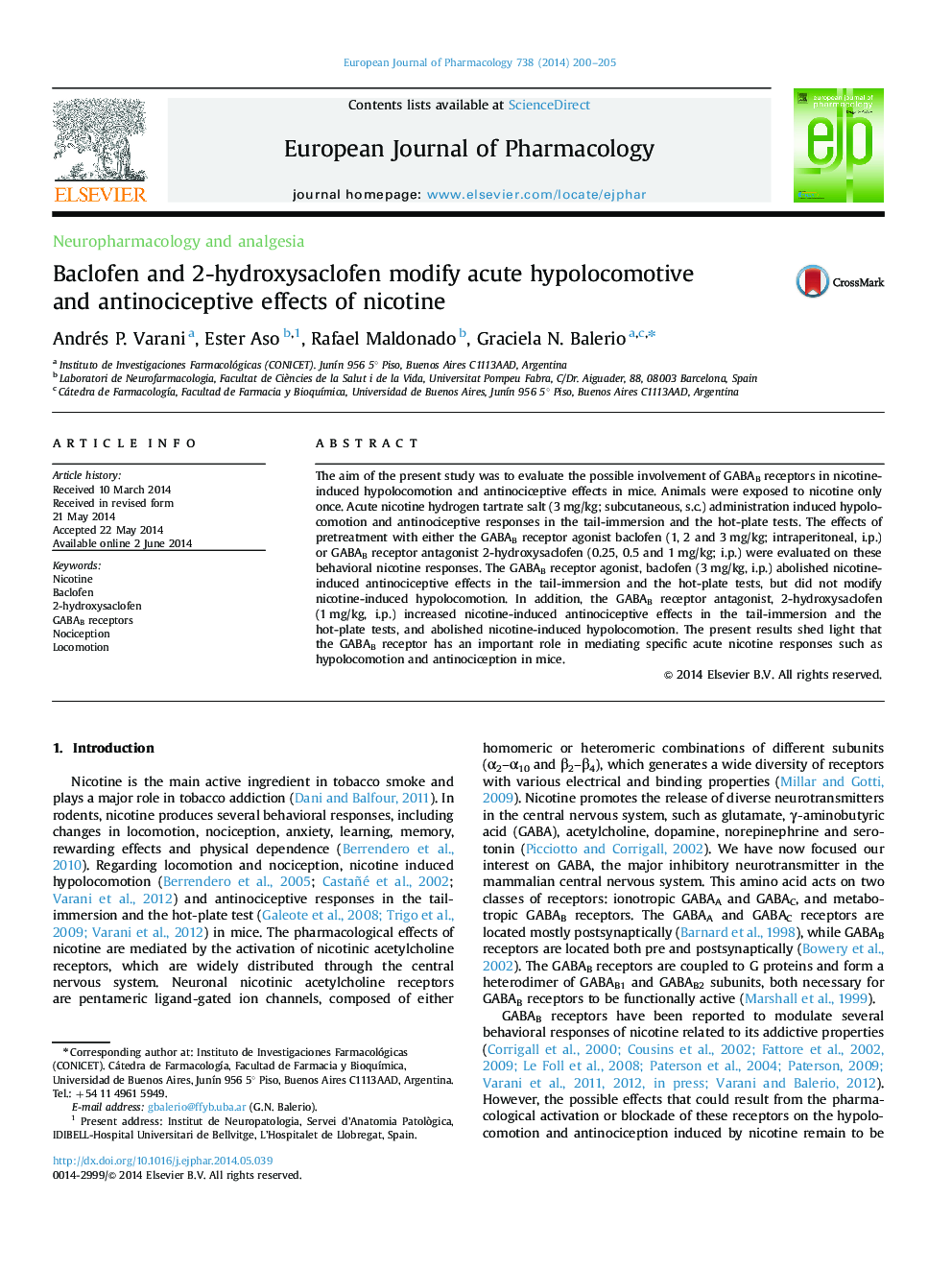| Article ID | Journal | Published Year | Pages | File Type |
|---|---|---|---|---|
| 5827911 | European Journal of Pharmacology | 2014 | 6 Pages |
The aim of the present study was to evaluate the possible involvement of GABAB receptors in nicotine-induced hypolocomotion and antinociceptive effects in mice. Animals were exposed to nicotine only once. Acute nicotine hydrogen tartrate salt (3Â mg/kg; subcutaneous, s.c.) administration induced hypolocomotion and antinociceptive responses in the tail-immersion and the hot-plate tests. The effects of pretreatment with either the GABAB receptor agonist baclofen (1, 2 and 3Â mg/kg; intraperitoneal, i.p.) or GABAB receptor antagonist 2-hydroxysaclofen (0.25, 0.5 and 1Â mg/kg; i.p.) were evaluated on these behavioral nicotine responses. The GABAB receptor agonist, baclofen (3Â mg/kg, i.p.) abolished nicotine-induced antinociceptive effects in the tail-immersion and the hot-plate tests, but did not modify nicotine-induced hypolocomotion. In addition, the GABAB receptor antagonist, 2-hydroxysaclofen (1Â mg/kg, i.p.) increased nicotine-induced antinociceptive effects in the tail-immersion and the hot-plate tests, and abolished nicotine-induced hypolocomotion. The present results shed light that the GABAB receptor has an important role in mediating specific acute nicotine responses such as hypolocomotion and antinociception in mice.
